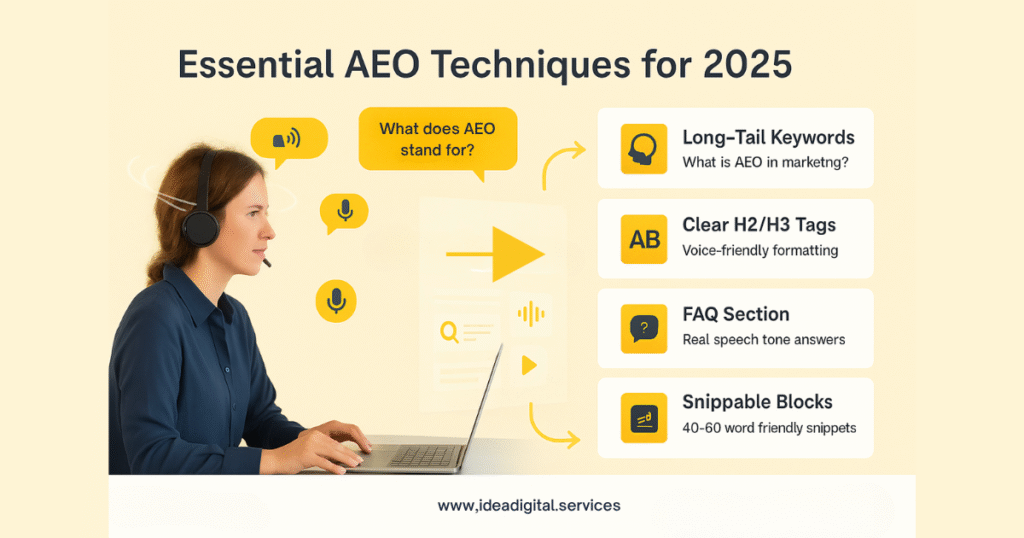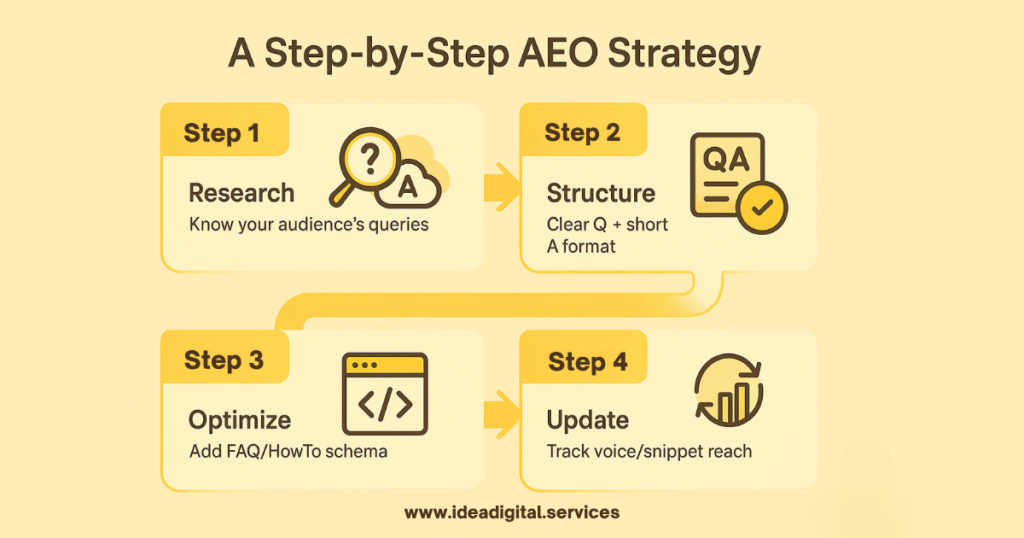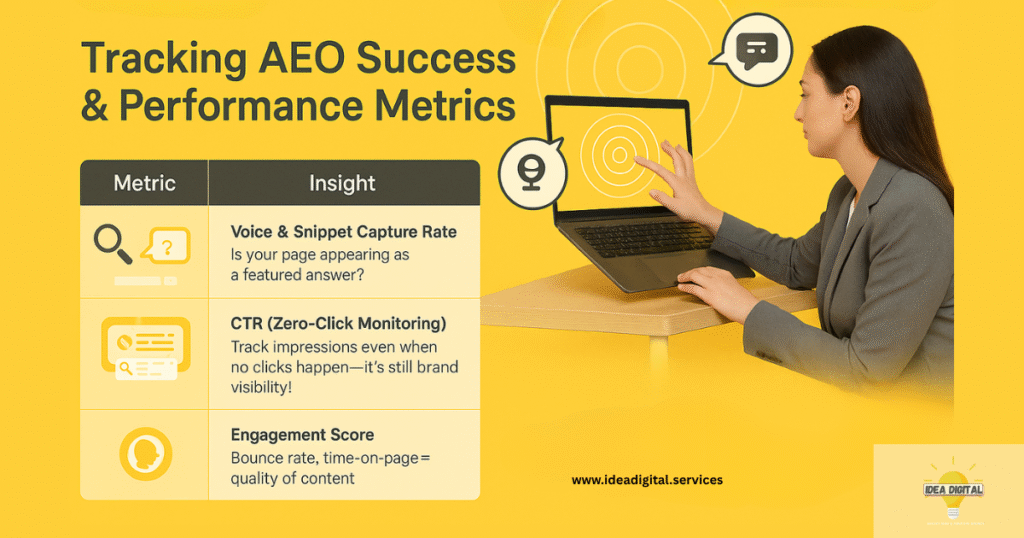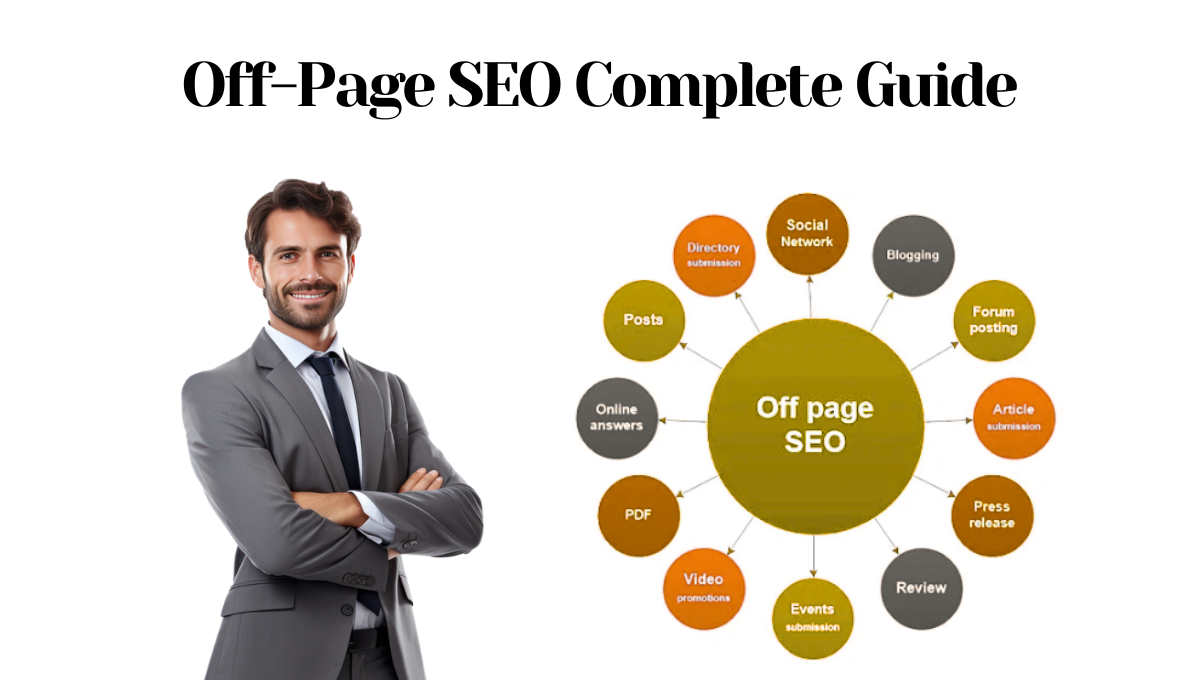Gartner (2024) says that by 2025, more than 70% of online questions will be answered right on the results page, without having to click. This means that your brand might not be seen if it’s not ready to provide quick, clear answers.
SEO is changing more quickly than it ever has. You can’t skip Answer Engine Optimization (AEO) anymore; you have to do it. This is due to voice search, AI assistants, and results that don’t require a click. Let’s talk about what answer engine optimization is, look at some of the newest answer engine SEO methods, and give you everything you need to get higher rankings and stay ahead.
Search engines are putting user intent and quick responses first. Brands that master AEO will not only get more attention, but they will also be trusted more. When someone asks a smart speaker or types something into Google, you make your brand the “go-to” source by giving them accurate, trustworthy information. This guide will show you exactly what to do.
1. What Is Answer Engine Optimization (AEO)?
What does answer engine optimization do? In short, AEO means improving content so that it directly answers users’ questions, especially on platforms that use AI or voice search. Traditional SEO, on the other hand, is all about rankings. AEO, on the other hand, is all about giving accurate, quick, and context-rich answers.
What does the short form AEO stand for? It stands for “Answer Engine Optimization,” which means making content that quickly answers questions people have when they search.
Getting your website ready to give short, reliable answers is part of AEO. This method makes featured snippets and voice results stand out more, which will be a big deal in 2025.

2. Understanding how Answer Engines Work
Response engines like Google’s highlighted snippets, Bing’s AI-generated summaries, and voice assistants like Alexa, Siri, and Google Assistant all give users quick, short answers to their questions. They look at a lot of data, pick out the most important bits, and put them right on the page with the search results. Most of the time, the user doesn’t even have to click to read more.
Because of this change, marketers need to focus on content that is ready to answer questions instead of just optimizing for keywords.
Why AEO is so important right now:
- Statista (2024) says that more than 58% of people who use the internet every day use voice search.
- Ahrefs says that 65% of all searches in 2025 will be zero-click.
People don’t want to have to go through a lot of pages; they just want quick answers. Answer engines like information that is short, well-organized, and answers specific questions.
3. Essential AEO Techniques for 2025
To stay competitive in this new world, you need to use SEO strategies with a modern answer engine. Some important methods are:
- Make sure your keywords are based on questions and are long-tail: For example, “What does AEO mean in digital marketing?” or “What does AEO stand for?” These questions sound more like real speech and are more like talking.
- Use clear H2 and H3 headings: Search engines like structured data because it helps them find answers for snippets and voice search.
- Include a section for questions that come up a lot: Write in a friendly, conversational tone to quickly answer common questions your audience may have.
- Set up schema markup: When you use structured data like FAQPage or HowTo schemas, search engines can better understand and show your information.
- Answer in short, clear sentences: Make sure your blocks are between 40 and 60 words long so that they can be easily read aloud by voice assistants or used as snippets.

4. A Step‑by‑Step AEO Strategy
You need to be methodical if you want to make a strong AEO strategy. Let’s take a closer look at each step:
Step 1: Research
First, find out what your audience wants. You can use AnswerThePublic, Google’s “People also ask” section, or SEMrush’s keyword tools that let you ask questions to get help. This helps find problems and opportunities to offer helpful answers.
Step 2: Structure
Put your content in the form of questions and answers. There should be a clear question at the start of each section, along with a brief, direct answer. Both users and answer engines like this format.
Step 3: Optimize
Use schema to add structured data markup to your content, like FAQPage or HowTo. This lets search engines know that your page has information that answers questions, which makes it more likely that it will show up in voice or snippet results.
Step 4: Check and Update
Check on how well your stuff is doing every so often. Check the rates of snippet collection, voice search visibility, and user engagement. Use these tips to change your content so that it stays the same or gets better.
This table makes it easy to understand how to do this:
| Step | Action | Purpose |
| 1. Research | Find user questions via tools and SERPs | Identify real search intent |
| 2. Structure | Use question-answer content formatting | Make a content snippet- and voice-ready |
| 3. Optimize | Implement schema markup | Enhance machine understanding |
| 4. Test & Update | Monitor results and refine content regularly | Stay competitive and maintain rankings |

5. Common Mistakes to Avoid in AEO
Many brands hurt their own AEO efforts without meaning to. Some common errors are:
- Putting in too many keywords: Some marketers still use awkward ways to put keywords in their ads instead of using natural, question-based language.
- Not paying attention to schema markup: Even if the answers are well-written, they might not show up as featured snippets if they don’t have structured data.
- Giving answers that are unclear and not on point: If your content doesn’t answer a question directly, people won’t see it.
- Not paying attention to visual parts: Adding pictures and infographics can help people understand written answers and get them more involved.

6. Tracking AEO Success & Performance Metrics
If you don’t keep track of things, you can’t make them better. Don’t just look at the usual rankings to see how well AEO works. Instead, consider:
- Capture rates for voice answers and featured snippets: Are your pages coming up as direct answers?
- Click-through rate (CTR) on questions that don’t need clicks: Even if some searches don’t get clicks, it’s still important to keep track of brand exposure.
- Measures of engagement: Look at the bounce rates and average time on page to see if people find your answers useful.
- Rates of change: Find out how well your informational content gets people to visit pages about your products or services.

7. Real‑World AEO Case Studies & Examples
- BrightEdge made voice search for healthcare 175% more visible: In just six months, BrightEdge helped a healthcare client greatly improve its presence in voice search results by adding structured medical content and making detailed FAQ sections. This not only made the brand more visible, but it also made it seem like a reliable source.
- Contently got 250% more featured snippets for an online store: With its specialized AEO answer engine optimization services, Contently changed the layout of product and blog pages so that they directly answered questions from customers who were ready to buy. As a result, the brand saw a 250% rise in featured snippets, which brought in a lot more qualified traffic and increased conversions.
- Semrush helped a SaaS company get 300% more visibility in searches that didn’t require a click. Semrush worked with a top SaaS platform to update its help center and product documentation using AEO-focused methods. By making content better for common product-related and troubleshooting questions, the brand saw a 300% rise in zero-click search appearances. This made users happier and cost less for support.
8. The Future of AEO & AI‑Driven Search in 2025
AI will be a big part of how we search in the future.
- According to Gartner (2024), AI-powered searches will account for about 70% of all searches by 2025.
- Brands will have to make their content even more tailored to what each user wants and needs to give hyper-personalized answers.
- Answers that include both text and images or videos will become the norm. This means that content formats will need to be more flexible.
With their advanced AEO answer engine optimization services, companies like BrightEdge and Contently are already ahead of the game. They are getting brands ready for a future where AI is the main focus.

Conclusion: Launching Your AEO‑Ready Strategy
Brands that give the fastest and clearest answers will win in the future, whether you’re asking “What is AEO?” or “How do I optimize my answer engine?” If you use the right methods, organize your content well, and keep getting better, you can get to the top of the search results and stay there.
Brands that use AEO now will stay ahead of their competitors and get a bigger share of voice and zero-click searches long before anyone else does. Answering questions directly and correctly also builds trust and credibility, which makes your brand look like an expert and keeps customers coming back. Also, giving quick, helpful answers makes the user experience much better, lowers bounce rates, and raises the chances of conversions. AEO makes sure that your content stays highly visible and competitive in a digital world that is always changing. This is because AI and voice technologies are changing how people search.
It’s time to switch from SEO to AEO. Start by going through the content you already have and adding these tips to make your website a reliable source of information. Start now and make your brand the place to go for your audience and search engines.
FAQs
What does AEO stand for, and why is it important?
AEO stands for “Answer Engine Optimization.” It works on improving content so that it can give users direct, short answers to their questions, especially when they use voice or AI-powered searches. It is important because it helps brands get searches with no clicks and do better in voice results and featured snippets.
How do SEO and AEO differ from each other?
Search Engine Optimization (SEO) tries to get websites to show up higher in regular search results. AEO, on the other hand, is made to give you quick answers right on the search page or through voice assistants. AEO puts what the user wants and quick, clear answers ahead of general keyword rankings.
How can AEO’s answer engine optimization services help my business?
AEO services help your business make content that stands out in search engines today. By clearly structuring your answers and using schema markup, these services help you get more qualified traffic and build your brand’s authority. This means that you are more likely to show up in voice search results and featured snippets.




